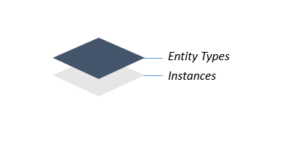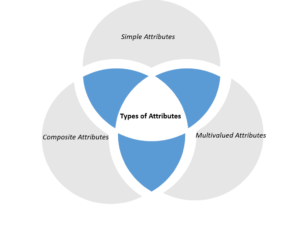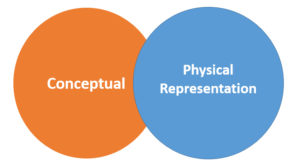If you’ve just embarked on your journey into the world of data modeling and ER diagrams, you might be feeling a tad overwhelmed by all the technical jargon. Fear not! As an experienced database designer with over a decade of hands-on experience, I’m here to break down the key distinctions between entities and attributes in ER diagrams. So, grab a cup of coffee, and let’s dive right in!
Definition of Entities
Alright, first things first – let’s talk about entities. In simple terms, entities are like the heart and soul of your ER diagram. They represent real-world objects or concepts that you want to store and manage in your database. Think of them as the stars of the show, each having its own unique personality (or attributes) that we’ll discuss in a bit.
Importance of Entities: Now, you might wonder, “Why are entities so important?” Well, let me share a personal anecdote to explain. Back when I was designing a database for a university, entities played a crucial role in bringing order to the chaos of student data. Each entity, like “students,” “courses,” and “instructors,” had its own unique set of attributes, making it easier to organize and retrieve specific information when needed.
Characteristics of Entities
Entities come with a bunch of unique characteristics that give them their identity. Let’s explore these traits together!
Uniqueness: In the database world, every entity must have its own special identifier, known as the primary key. Just like our fingerprints, primary keys ensure that each entity is distinct from the others. For example, imagine a database of adorable puppies (because, well, who doesn’t love puppies?). Each puppy would have its own unique ID, such as “Bella123” or “Max987,” making them easy to track and differentiate.
Existence: Entities, my friend, are all about independence! Each one stands tall on its own and doesn’t rely on any other entity to exist. Like our trusty smartphones – they’re useful even without any fancy accessories or apps.
Relevance to the Database: Entities are the backbone of your data model, so they better be relevant! When I was working on a project to build an e-commerce database, we had entities like “products,” “orders,” and “customers.” It was essential to ensure that each entity contributed to the overall goal of managing the online store effectively.
Entity Types and Instances
Now, this part can be a bit mind-boggling at first, but I promise you it’s not rocket science!
Entity Types: Think of entity types as big umbrella categories. They group similar entities together, just like your favorite cereal brands are all under the “Cereal” section at the grocery store. An entity type, like “Car,” defines the general structure, including its attributes, that all cars share.
Instances: Instances, on the other hand, are like the individual representatives of their entity types. Going back to our “Car” example, an instance could be a specific car model, say, “Toyota Camry.” It’s like picking out your favorite car from the showroom – unique, with its own attributes and values.

Distinction between Entity Types and Instances: I remember when I first started working with ER diagrams, I found the concept of entity types and instances a bit confusing. But once I grasped the idea of “categories” and “individuals,” it all clicked! Just think of entity types as families and instances as the members within those families – they share common characteristics, but each member is unique.
Definition of Attributes
Let’s take a closer look at attributes – the unsung heroes of ER diagrams! Attributes are like the DNA of entities – they define their properties, characteristics, and unique traits. Think of attributes as the little details that make each entity special and stand out in the database crowd.
Emphasize the Significance: Attributes play a crucial role in providing a wealth of information about entities. Imagine you’re building a database for a bookstore (a bookworm’s dream, right?). Each book entity would have attributes like “title,” “author,” “genre,” and “publication date.” With this detailed info, users can quickly find their favorite books, and you’d save them from wandering aimlessly among endless shelves.
Types of Attributes
Now, let’s explore the fascinating world of attribute types! Brace yourself – it’s not as complicated as it seems.
Simple Attributes: Simple attributes are like the building blocks of an entity. They represent basic, indivisible characteristics. For instance, in our bookstore example, “title” and “publication date” are simple attributes – they can’t be broken down any further.

Composite Attributes: Composite attributes, on the other hand, are made up of multiple sub-attributes. Think of them as attribute families! A perfect example is “address” – it includes sub-attributes like “street,” “city,” “state,” and “zip code.”
Multivalued Attributes: If an attribute can have multiple values, it’s a multivalued attribute. Take “genre” in our bookstore – a book could fall under multiple genres like “mystery” and “romance.”
Contribution to ER Diagrams
Understanding these attribute types helps create a clear and organized representation of entities in ER diagrams, ensuring no vital details get lost in the database labyrinth.
Role of Key Attributes
Keys hold the key (pun intended!) to establishing meaningful relationships between entities. Let’s unlock the secrets of key attributes!
Uniqueness and Identification: Key attributes, like “ISBN” for books or “employee ID” for employees, provide the uniqueness needed to identify each entity instance. Just like your fingerprint is unique to you, a key attribute ensures no two entities can be confused.
Building Relationships: Primary keys, which are special key attributes, form the foundation of relationships between entities. They establish connections and enable the smooth flow of data between different parts of the database.
Key Distinctions between Entities and Attributes
Conceptual vs. Physical Representation
Time for a mini road trip from the conceptual realm to the physical realm of ER diagrams!

Conceptual Representation: In the conceptual world, we design ER diagrams with the big picture in mind. It’s like drawing a map of your dream vacation without worrying about every tiny detail.
Physical Implementation: When we step into the physical realm, we’re concerned about the nitty-gritty details. It’s like packing your bags for that dream vacation, making sure you have everything you need.
Read on How to Create ER diagram
Relationships and Cardinality
Relationships are like the spice of life in ER diagrams – they connect entities and add flavor to your database!
Connected Entities: Entities come together through relationships, like students enrolling in courses or customers placing orders. These connections make the database come alive with meaningful interactions.
Cardinality: Cardinality, in simple terms, shows how many entities can be linked together. It determines whether relationships are one-to-one, one-to-many (like one customer having multiple orders), or many-to-many (where several customers can have several orders).
Entity Hierarchies and Inheritance
Entity Hierarchies: Just like a family tree, entities can have hierarchies, where they are grouped into parent and child relationships. Imagine a “Vehicle” entity as a parent, with “Car” and “Motorcycle” entities as its children.
Inheritance: Inheritance allows child entities to inherit attributes and relationships from their parent. It’s like inheriting your family’s blue eyes or musical talent.
Best Practices in ER Diagram Design
Normalization
Normalization is like Marie Kondo-ing your database – keeping it tidy and clutter-free!
Eliminating Redundancies: Normalization helps eliminate data redundancies, ensuring you don’t store the same info in multiple places. Trust me; this tidying up will save you from headaches down the road!
Anomalies, Be Gone! Normalization also prevents data anomalies, like update, insert, and delete anomalies. It’s like sprinkling a little magic to maintain data consistency and integrity.
Abstraction and Simplification
When it comes to ER diagrams, simplicity is your superpower!
Clear and Understandable: Simplify, simplify, simplify! Abstraction allows you to focus on the big picture, making your ER diagrams easy to understand for your team and future generations of database designers.
Complexity, Tamed: While databases can be complex, don’t let them scare you! Use abstraction to tame the complexity and create ER diagrams that are like a well-organized library – everything in its right place.
Conclusion: Congratulations, my fellow data enthusiasts, you’ve now unlocked the secrets of entities and attributes in ER diagrams! Armed with this knowledge, you’re ready to build robust, organized databases that will impress your peers and stakeholders. Remember, learning database design is like peeling back layers of an onion – it’s exciting, and there’s always something new to discover! So, keep exploring, keep experimenting, and happy database designing!
Conclusion
Understanding the difference between entities and attributes is crucial in ER diagrams. Entities represent real-world objects and form the structure, while attributes define their properties. Proper identification and modeling lead to an efficient and reliable database, avoiding redundancy and supporting effective data management.









 Micheal Daniel
Micheal Daniel

